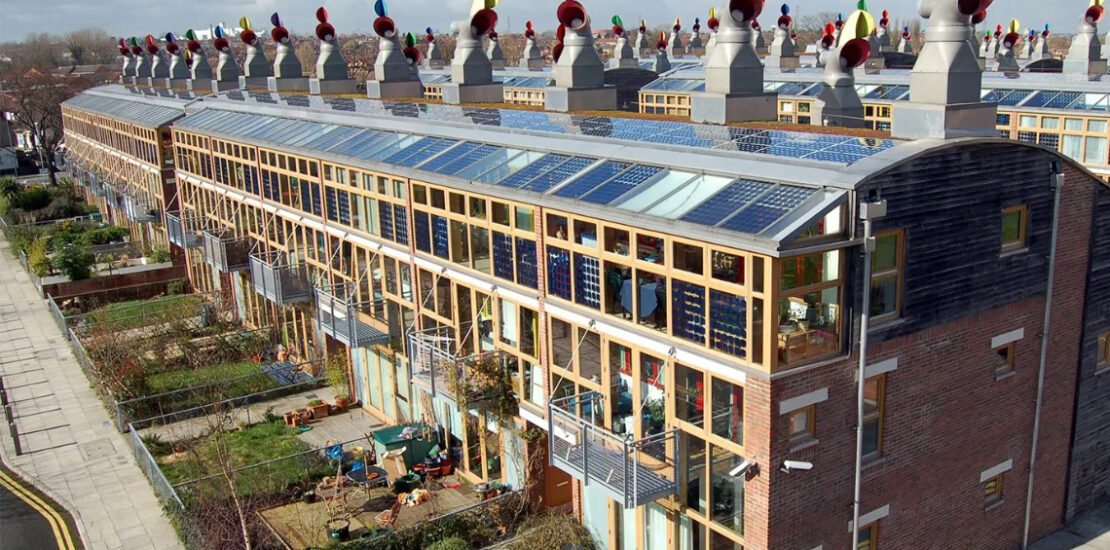Net-zero energy buildings
- 02/01/2025
- Posted by: Besim Islami
- Categories: Economics, Energy audits, Energy efficiency, Innovation, International, Sustainable Energy

A Zero-Energy Building (ZEB), also known as a Net Zero-Energy (NZE) building, is a building with net zero energy consumption, meaning the total amount of energy used by the building on an annual basis is equal to the amount of renewable energy created on the site or in other definitions by renewable energy sources offsite, using technology such as heat pumps, high efficiency windows and insulation, and solar panels.
The goal is that these buildings contribute less overall greenhouse gas to the atmosphere during operation than similar non-ZNE buildings. They do at times consume non-renewable energy and produce greenhouse gases, but at other times reduce energy consumption and greenhouse gas production elsewhere by the same amount. The development of zero-energy buildings is encouraged by the desire to have less of an impact on the environment, and their expansion is encouraged by tax breaks and savings on energy costs which make zero-energy buildings financially viable.
- Net-zero energy building:
Based on scientific analysis within the joint research program “Towards Net Zero Energy Solar Buildings” a methodological framework was set up which allows different definitions, in accordance with country’s political targets, specific (climate) conditions and respectively formulated requirements for indoor conditions: The overall conceptual understanding of a Net ZEB is an energy efficient, grid-connected building enabled to generate energy from renewable sources to compensate its own energy demand - Positive energy district:
Expanding some of the principles of zero-energy buildings to a city district level, Positive Energy Districts (PED) are districts or other urban areas that produce at least as much energy on an annual basis as they consume. The impetus to develop whole positive energy districts instead of single buildings is based on the possibility of sharing resources, managing energy efficiently systems across many buildings and reaching economics of scale
- Energy “harvest”:
ZEBs harvest available energy to meet their electricity and heating or cooling needs. By far the most common way to harvest energy is to use roof-mounted solar photovoltaic panels that turn the sun’s light into electricity. Energy can also be harvested with solar thermal collectors (which use the sun’s heat to heat water for the building). Heat pumps can also harvest heat and cool from the air (air-sourced) or ground near the building (ground-sourced otherwise known as geothermal). Technically, heat pumps move heat rather than harvest it, but the overall effect in terms of reduced energy use and reduced carbon footprint is similar. In the case of individual houses, various microgeneration technologies may be used to provide heat and electricity to the building, using solar cells or wind turbines for electricity, and biofuels or solar thermal collectors linked to a seasonal thermal energy storage (STES) for space heating. - Development efforts:
Wide acceptance of zero-energy building technology may require more government incentives or building code regulations, the development of recognized standards, or significant increases in the cost of conventional energy
Leave a Reply Cancel reply
Contact us at the Consulting WP office nearest to you or submit a business inquiry online.


